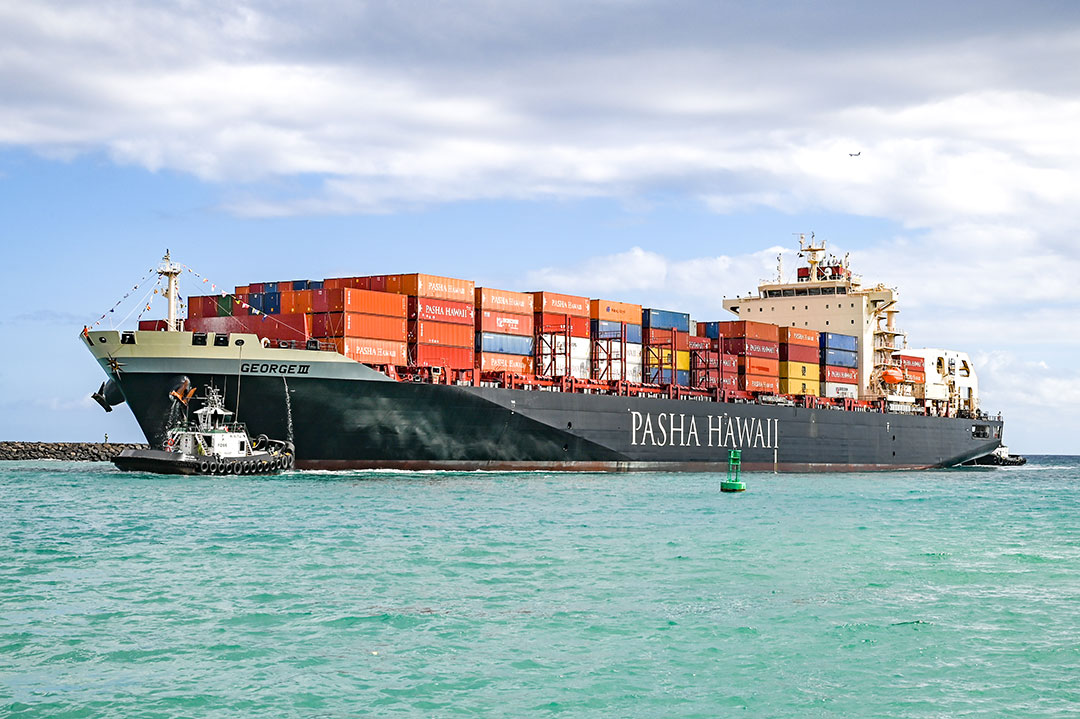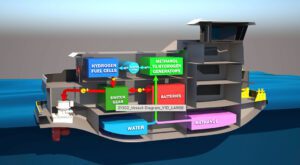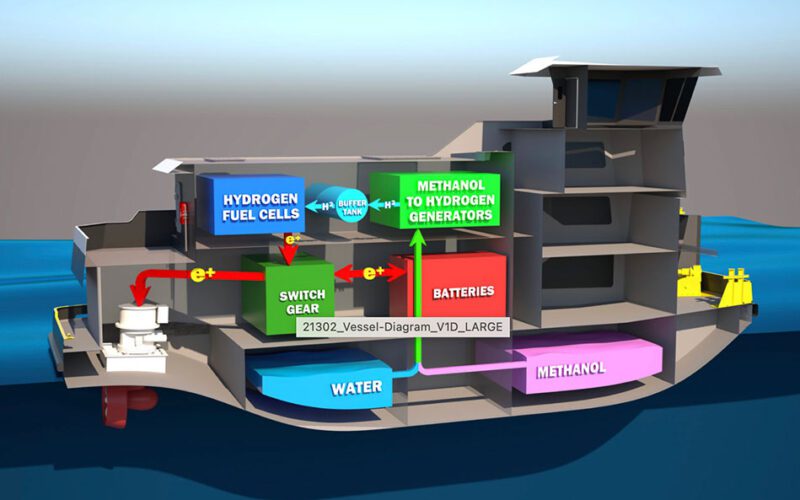
The U.S. Department of Energy released a plan earlier this year aimed at sharply reducing emissions across the transportation system by 2050, including the maritime industry.
The National Blueprint for Transportation Decarbonization calls for research into cleaner energy sources and exhaust treatment for vessels. It pledges to stay engaged with shipping companies, dock and port operators and energy providers, and proposes resources for improvements to infrastructure and ship design to allow for the use of new fuels.
The blueprint calls for “a strong and immediate commitment” from the maritime industry while acknowledging there is no clear path forward to replace the diesel engines that power most commercial vessels.

“Despite the variety of potential decarbonization fuels, technologies, and policies under development, the best pathway for decarbonizing the maritime sector is unclear,” the planning document states. “New maritime technologies can be slow to be adopted, particularly when safety and operational standards still need to be established.”
Maritime transportation accounts for about 3 percent of carbon emissions generated in the U.S. According to the report, half of these emissions are from international shipping, including seafaring U.S.-owned ships and fuel purchased in the U.S. for cross-ocean voyages. Another 30 percent comes from domestic shipping and the remaining 20 percent from recreational boats.
At present, a vast majority of the 12 million recreational boats and 38,000 commercial vessels owned by American individuals rely on fossil fuels. Across all modes of transportation, the administration aims to transition all new vehicle sales to zero-emission technologies by the mid-2030s. However, the shipping industry relies on vessels to complete operational lives of up to 50 years, meaning many fossil fuel-burning ships will be on the water for several decades.
Some cleaner fuels, like methanol and biofuel blends, are “drop-in” replacements for traditional fossil fuels. That means they are usable for the same engines — albeit with some upgrades. But a significant problem exists in the production chain. Some clean-burning fuels are produced via methods that burn fossil fuels, negating their benefit for emission reductions. More research is needed, the report notes, “to ensure that they have low life cycle emissions.”
The blueprint also calls for expanded use of electricity, including vessels powered mainly by batteries and electric motors, the hybridization of power sources and “plugging in” to an electric grid while in port, as has been mandated at several California ports.
The plan also calls for the allotment of resources into several kinds of infrastructure improvements, including vessel upgrades and retrofits as well as charging and refueling infrastructure. Some federal programs, like the Port Infrastructure Development Program, offer grants and technical assistance for these aims.
Refueling is one of the greatest challenges in utilizing clean energy, Caitlyn Stewart, vice president of regulatory affairs for the American Waterways Operators (AWO), told Professional Mariner. There are several good options for diesel alternatives, but ships cannot access them at enough ports.
“Biofuels, methanol, ammonia, hydrogen, all of these things in sort of different configurations have the potential to be applied to the domestic fleet,” said Stewart, “but the challenge is that they all have their different advantages and disadvantages, and I think that the primary issues are the availability of the fuels, the availability of fueling infrastructure and the energy density of the alternative fuel in whatever form we use.”
The Biden administration notes there is a vast span of entities involved, from vessel owner/operators, to ports, to terminal operators and energy providers. The administration also acknowledges maritime emissions are an international issue. It emphasizes the importance of relationships with the International Maritime Organization to cut emissions.
The proposal was welcomed at the International Chamber of Shipping, a leading industry organization. “We have a short window of opportunity to move forward with this and put in place a global economic measure which can spur the development and production of alternative fuels for shipping,” Stuart Neil, director of strategy and communications, said in an email.
The blueprint aligns with goals of ship operators on the inland waterway system, said Stewart from the AWO.
“I think what the administration’s transportation decarbonization strategy really highlights is that there are abundant areas in which our society and our transportation sector will need to shift in order to reduce greenhouse gas emissions,” she said.
Stewart said the inland industry, with its relatively small vessels compared to large oceangoing ships, is well positioned to adapt to changes in the coming years.
“I think from a feasibility perspective,” she said, “we’re feeling very optimistic about our ability to play a role in making that transition.”

